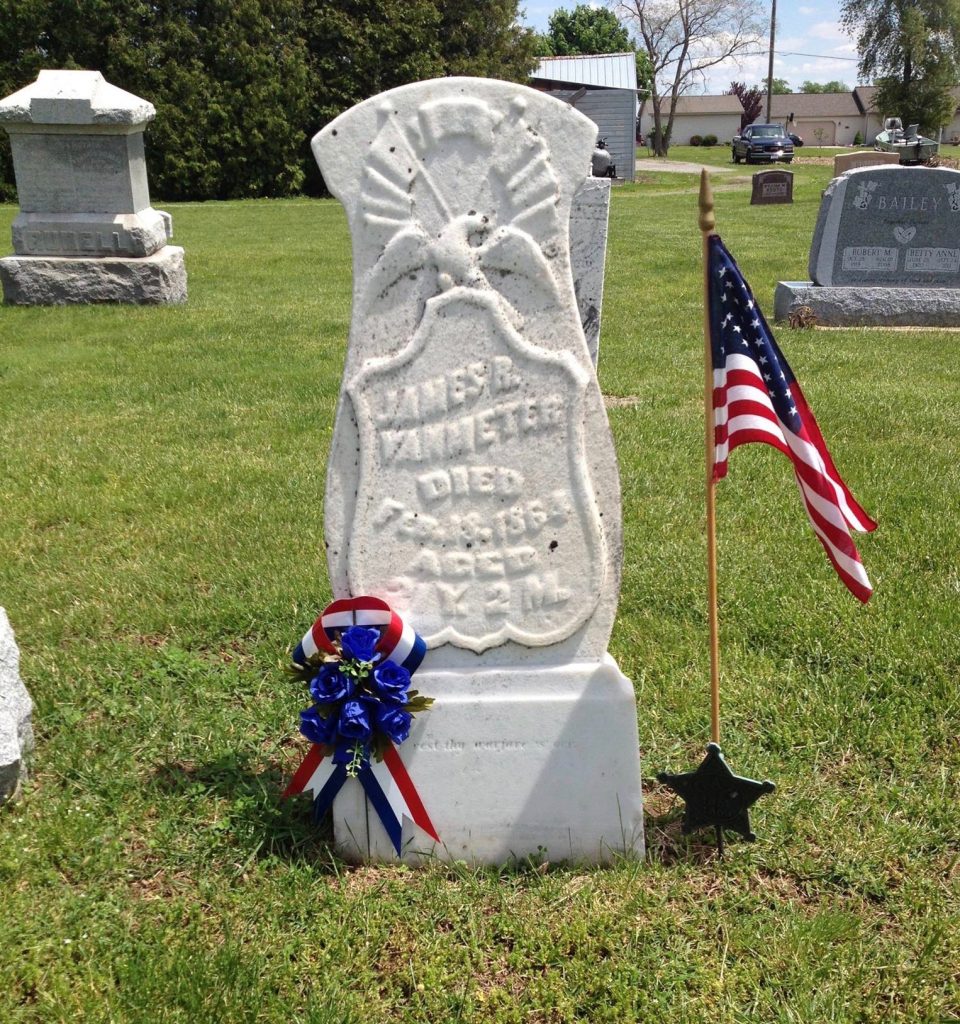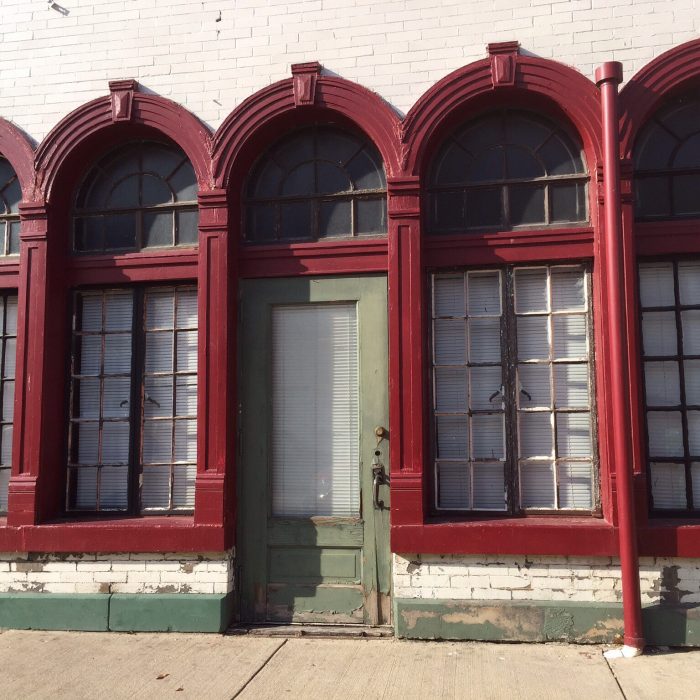A few years back I was wandering a small local cemetery. It’s the final resting place for a number of my ancestors. Looking at family headstones I noticed the lone grave of a Civil War soldier, James R. Van Meter. His marker was engraved with an eagle and the inscription “Rest Soldier Thy Warfare is Ore”. His surname was one in my family tree but I knew he wasn’t a direct ancestor. He had to be a collateral relative. When I saw he was only 21 years old and died during the Civil War I decided to learn more about him.
What happened to James? My thoughts jumped around with various theories. Had he been shot in battle? I wondered if he had a wife? Did he leave children? My thought was that he didn’t leave a wife and family, given his age. I’m sure he was mourned by his parents and siblings, but I’ll bet it wasn’t too many years later that his name probably wasn’t mentioned again. Not out of disrespect of course, it’s just that life goes on. Parents pass away, siblings marry and have families of their own. Brothers or uncles who died in the war are mentioned in passing to youngsters who may or may not remember.
So here I was a century and a half later, kneeling next to this young soldier’s headstone, telling him I’d learn about his life and he’d never be forgotten. Finding more about the life and Civl War service of James R. Van Meter became an obsession.

I searched all the appropriate resources for my soldier on Ancestry, the Soldiers and Sailors Database, and FamilySearch. I found his dates of enlistment and unit he served with, Co. F 4th Ohio Volunteer Cavalry (OVC). I read the regimental history. I scoured censuses, marriage records and the pension index. My hunch was right. He didn’t seem to be married but I couldn’t account for him from the 1850 US Federal Census to the 1860 US Federal Census, right up until 6 Sep 1861 when he enlisted with the 4th OVC. I was concerned. Could it be that this young man with barely 21 years spent on this earth was more or less lost to history?
At an impasse, I went back over my research and had forgotten my notation that there was another Van Meter, George S. that enlisted in this same regiment, serving with the same company. In my research I had come to find there were many Van Meter cousins that enlisted through the course of this war from the area. So I entered the side door. I started researching George in the hopes James would show up. Boy did he ever!
I used the same research plan for George S. Van Meter finding a couple important facts. George was James’ brother, he married and sadly also died during the war. With a widow came a pension application and file. I was fortunate enough to find George Van Meter’s widow’s pension on Fold3.
As I read that pension file, my heart jumped and I couldn’t devour the words fast enough, as my brick wall started tumbling down. In that file were two letters from George (and James’) sisters. They described how the family had moved several counties to the north when the brothers were younger. They farmed there until their father unexpectedly died in 1851 leaving their mother to raise seven children alone. Mom moved back to their original county and remarried. Her second husband was a drunk, who she divorced years later. James was specifically mentioned in a couple sentences in one letter, confirming he never married and sadly died six weeks before George was shot and killed on sentry duty outside Florence, Alabama. So many of my questions about James were answered in his brother George’s pension file. I learned where James was from 1850-1860. I was able to research that particular county and find the family there. I had a lot more information about the family and its dynamics. I can’t explain how happy I was in finally learning about the Van Meter brothers, especially James.
I’m a firm believer in cluster or collateral genealogy. Cluster genealogy is a research technique employed by genealogists to learn more about an ancestor by examining records left by the ancestor’s cluster. A person’s cluster consists of the extended family, friends, neighbors, and other associates such as business partners. Researching the lives of an ancestor’s cluster leads to a more complete and more accurate picture of the ancestor’s life.
This approach certainly proved beneficial in researching James Van Meter. I don’t know if I would have ever have uncovered his story without his brother’s pension file. I felt real success when I was able to again kneel next to James headstone and tell him I knew about his life, his Civil War service and he was not forgotten.


